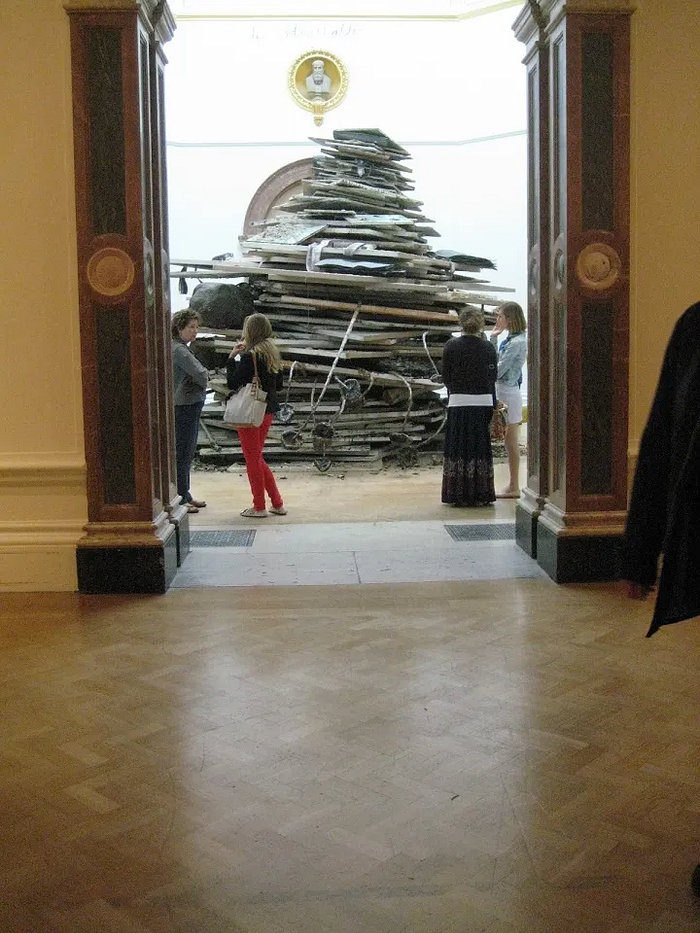
The Sacred Pile
In 2014, I stood in the Royal Academy before a towering mound of discarded canvases, twisted frames, lead fragments, and broken materials, all assembled into a work by Anselm Kiefer. It was a presence more than an object, like a collapsed temple made from the ruins of forgotten intentions. The people around me whispered, but the work was silent. It didn’t need to speak. Everything it had to say was already embedded in its weight, its dust, and its unapologetic refusal to discard what once seemed like failure.
I wrote about that visit then, recording my impressions and trying to make sense of the unease and awe I felt. At the time, I was beginning to understand the deep connection between art, time, and process. But years later, I return to that same memory with a different awareness — one shaped not only by philosophical insight, but by the simple act of making things with my hands. Tiling a floor, feeling the crust form on a layer of adhesive, watching materials dry, crack, or resist. These aren’t just tasks. They are lessons in transformation.
Now, I understand what Kiefer was doing more fully. That mound wasn’t a graveyard of failed paintings. It was time itself, compacted and made visible. Each painting had its own moment of creation, its own crisis of meaning, and its own abandonment. And then, like sediment, they were brought together to form a new structure — not a correction, but an evolution. The past wasn’t edited out. It was honoured.
There is something sacred in this. In a world obsessed with progress, perfection, and disposal, Kiefer shows us that the broken carries its own authority. What you cast aside one day becomes the foundation of your next insight. Even the most awkward or unfinished attempt holds a kind of memory — a fingerprint of the moment when it was made. And when layered together, those moments don’t compete. They harmonise.
I’ve come to treat my own creative life the same way. Whether building a porch or composing a thought, I no longer separate the polished from the raw. The mistake isn’t something to erase. It’s something to repurpose. And in that shift, something deep inside settles. It’s no longer about being right. It’s about being real.
The Sacred Pile, then, is not just Kiefer’s. It is mine. It is yours. It is every moment we thought we failed, every canvas we turned to the wall, every sentence we never finished. It is the growing, layered architecture of a life lived in process. And perhaps the real masterpiece isn’t any single work, but the pile itself — accumulated, unresolved, and ultimately, unthrown.
In truth, this sacred pile is also the embodiment of what I once called “The Truth in the Lie in Me.” The lie is not deception, but the early, incomplete truth that drove me forward. It is the unformed insight, the misread gesture, the discarded idea — all of which pushed me to see more clearly. The transformation doesn’t happen by escaping the lie, but by integrating it. In this way, the lie becomes the material, and the truth becomes the form. The process is not of perfecting, but of redeeming. And that is what gives the pile its power — it is built of everything that mattered, even when I didn’t yet know why.

